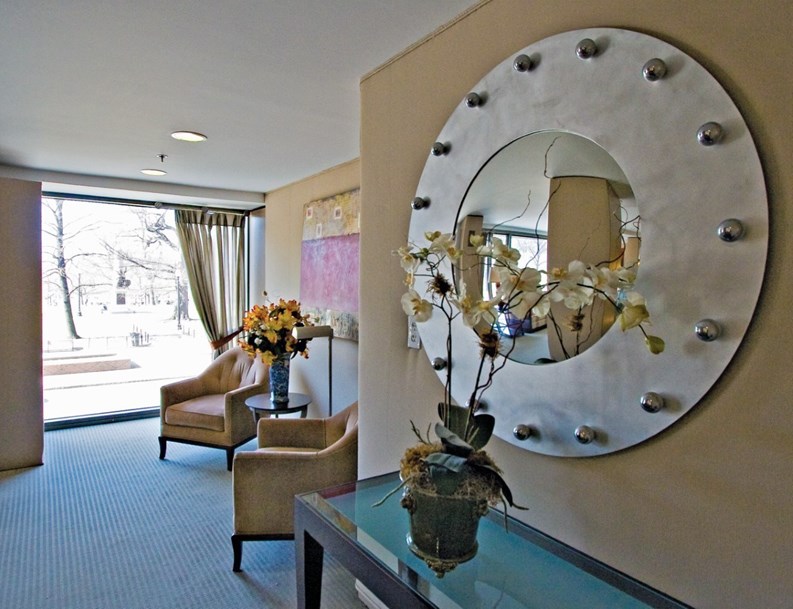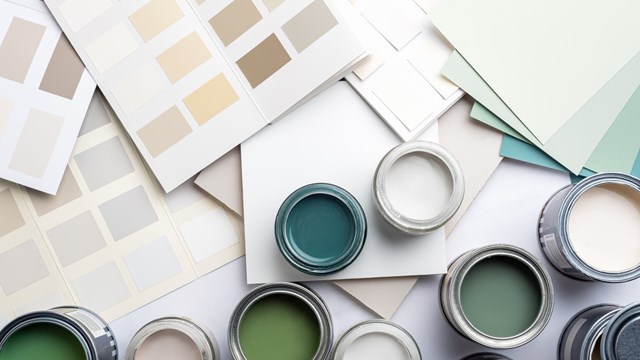Worn-out or damaged common areas in community associations can hurt overall property values and send the wrong message. Of course, a newly-refurbished grand entrance and beautiful common areas that give owners bragging rights are universally popular.
But when it comes to paying for that refurbished lobby, the consensus can break down. Some owners may want replicas instead of original art to save money, or low-maintenance floor tiles in place of carpet that needs frequent shampooing. And if the lobby and common areas aren’t “too awful,” there are always a handful of frugal owners who insist renovating can wait “a year or two.”
With such a multitude of interests, how does a condominium determine when its common areas are due for renovation, and how much renovationis in order?
Balancing Act
For all renovation projects, it’s up to the board members to make the aesthetic and economic decisions, while maintaining a balance of interests. Juggling these challenges is not an easy task, especially when faced with homeowners whose interests are diverse and often cross-generational, and who maynot be sold on the project’s value.
Robert Brown, chairman of the Board of Trustees at Thomas Graves Landing Condominiums in Cambridge, Massa-chusetts, recognizes these challenges. According to Brown, “The hardest challenge for the board when faced with capital improvement projects is keeping a balance between controlling costs and maintaining and enhancing the value of the property.” David J. Levy, PCAM, president of Sterling Services, Inc. a property management company in Holliston, Massachusetts, agrees. “There is a division of interests amongst residents which requires balance. One faction wants their building to look great, no matter the cost. The other faction stands firm, stating there is no way you will spend that much of their money.” With over 20 years of experience addressing these issues, Levy believes “the key to a successful renovation project is beingas inclusive as possible in getting all of the shareholders involved as early as possible, often years in advance.”
All Aboard
Brown got the residents of Thomas Graves Landing Condominiums involved early in the renovation project. He explains, “When our board decided to upgrade… we approached unit owners with inquirieslooking for recommendations. We then received, reviewed, and adopted the recommendations.”
Levy also says communication is key to solving the challenges resulting from political dynamics and the need to achieve broad-based support amongst the owners. “Open meetings, and the creation of sub-committees, if possible, help residents become more educated on the issues, and become supporters of the board’s position on the project. Start by making a presentation of future goals at the annual meeting. Weave these into the financial plans for the property in concept form,” he says.
First Impressions
If it’s time for a change, the lobby offers the first opportunity to make a statement and indicate the value of what’s inside the building to potential buyers. “It is critical that the main lobbymaintains a consistency with the overall image that the trustees wish to project. Curb appeal directly impacts property values, and the condition of the lobby sets the image for the property,” says Levy.
Understanding that design selections for the common areas should be consistent throughout the building, extending from the lobby to the individual units, boards will want to focus on design requirements that fit the space, scale, and scope of the project. Next up comes consideration of design options that arecompatible with the functional needs of the building, the budget, and the board’s vision.
Existing architectural features in the lobby can be turned into assets by incorporating them into the new design. Including historic features or broad windows as design elements can create a signature look for the building. For example, Thomas Graves Landing Condominiums are located at the edge of the Charles River Canal, in East Cambridge. The property is composed of two buildings, each with a separate lobby. Both lobbies have a contemporary feel and easy elegance that extendsthroughout all of the common areas.
With large windows offering natural light, each lobby presents inspired views of the canal that welcome pause. Current design details include spaces that are bright and warm, with an open floor plan designed for those who wish to lounge. The furniture is clean-lined and comfortable.
Finishing touches such as fine molding complement architectural details. Artwork, mirrors, and live plants add depth and character. The lobbies did not always look this way. Brown explains, “For the renovations to our lobbies, the goal was to have architectural features and finishes remain, andreplace or refurbish furniture and carpet that was showing wear.”
And if the lobby will become more than a space to pass through – inviting residents and visitors to congregate – adding comfortable chairs placed in an arrangement designed for that functionis a good idea. These considerations go beyond simply spots for relaxation; some common areas off the lobby affect the daily needs of all residents, such as the mailroom and package storage areas.
Form Follows Function
With a goal in place, the designer works with the board regarding the condo’s design options, through space planning, product research, budget review, and specification for purchase. Brown explains, “Identifying the parameters for renovations sets the budgetary guidelines for the designer to work within; however, the board reservesthe right to review and amend recommendations for budgetary reasons.”
Establishing goals helps to keep the project moving. The initial design phase is exploratory in nature, presenting many options. Product selections will be determined by functional requirements, finish intent, durability, daily maintenance, cost, and overall aesthetic quality. Wholesale pricing made available through the designer, and reducedprices for items purchased in larger quantities help keep the project affordable. “The discounts obtained by the designer were an important part of budgeting our renovation projects,” Brown says.
Custom goods can also be incorporated into the design, setting the property apart. Custom goods created by the designer and produced especially for the property can range from flooring and light fixtures to furniture that integrate colors, patterns, or design elements selected to complement the property. At Thomas Graves Landing Condominiums, the carpet in the lobbywas custom-designed to incorporate colors found in the adjacent granite tiles. Through continuity of color, the lines of transition between the carpet and tile become blurred, creating a unifying element.
With the right manufacturer, custom goods do not have to be cost-prohibitive. “Some mills offer low minimums for custom goods,” says Scott Johnson, manufacturer’s representative for Fortune Carpet and Gerflor flooring. Johnson adds, “a few small mills have sample plants which can turn custom samples overnight to the client. You getmore service, flexibility, creativity and quality from smaller manufacturers.”
For Love or Money
Thoughtful planning can stretch budget dollars. One key idea suggested by the pros is breaking the project into phases, often stretching over a few years. “Unless there is a true safety concern, most projects can be done in phases,” Levy says. Problems to watch for when stretching out the renovation involve products specified in an early phase that may not be available at a later date, and interior finishes, color dyes or specialty colors that may not match those specified in an earlier phase.
Another budget decision involves adding new fixtures, which can offer added benefits and value. Stone fireplaces with gas convenience, and freestanding heaters in outside common areas are currently in style. Natural stone surfaces are both desirable and high-performance surfacing materials – and are available in a variety of cost alternatives. When determining selections for purchase, Levy points out, “The goal should be the best overall value, which tends to be the lowest long-termcosts, not the lowest initial cost.”
It’s Easy Being Green
Board members can pass on significant savings to the homeowners by using green fixtures that reduce utility costs year in and year out. Products designed to be green that don’t sacrifice performance include low-flow toilets and energy-efficient light fixtures. Many of these products are supported by incentives from local utilities. For specialty flooring, Johnson adds, “clients often ask about products that are green, but are unwilling to pay for it. Take into consideration a product like vinyl flooring. The most important aspect is that by far, it has one of the longest life cycles of any product, which is the biggest environmental statement you can make.”
Other green products don’t save energy but are recognized for being safer for owners, or environmentally-friendly. These include contract carpeting recognized for its post-industrial recycled content; fabrics produced using rapidlyrenewable materials, and non-VOC paint, which has no lingering odor, is more durable, and dries faster.
Flower Power
Plants help create healthy environments, add vitality to a space, and become important design elements. Through form and texture, they can fill empty spaces begging for attention. What plants are popular today? Alexia Morosco, the general manager of garden design for Winston Flowers in Boston, Massachusetts, turns to varieties of floor plants that have exposed trunks and interesting leaf shapes. She explains, “Popular plant varieties include Yuccas, the Ponytail Palm, Pencil Cactus, and Jade Trees. Plant varieties that are long lasting and are easy to care for under abroad range of conditions offer good value. Select good performers such as Philodendron Moonlight or the spiky Sansevieria Cylindrical.”
High-end condominium properties are increasingly using plants as a design element, often placing emphasis on the container. Morosco says, “Containers in various finishes such as metal, wood, and metallic glazes are all hot right now. Use groupings of pairs or collections of containers in a series of even numbers. By adding a combination of specimen plants and rock top dressings, containers allow you to bring organic elements indoors. Thoughtful placement of common varieties of plants indistinctive containers will help them appear fresh and new.”
When renovating common areas, an inspired approach to product selection, combined with thoughtful planning that focuses on practicality, will ensure success and create the broadest appeal. Well-designed common areas will be worthy of display, and unitowners will live in a condominium building that they are proud to call home.
Lisa Goodman is a freelance author and principal of Lisa Goodman Design in Sharon, Massachusetts.





Leave a Comment